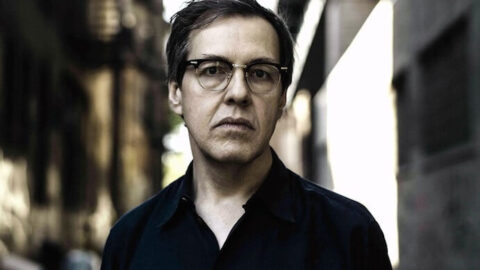On Tuesday, June 16, pianist Bruce Brubaker took to the stage at Le Poisson Rouge to celebrate Glass Piano, his new recording that was released on June 1 by InFiné. Known for his performances of minimalist piano music, Brubaker has previously released recordings featuring music by Glass, John Cage, Nico Muhly, and Meredith Monk. What makes Glass Piano distinct is that it marks Brubaker’s first recording that is devoted entirely to Glass, including classics like Mad Rush and Metamorphosis.
Brubaker kicked off the concert at Le Poisson Rouge with these two Glass staples. Mad Rush juxtaposed Brubaker’s delicate and subtle touch on the piano with the technique and stamina required to perform the quicker arpeggiated sections of the piece. A bold overture to the rest of the concert, Brubaker’s performance of Mad Rush was magically engaging, allowing the counterpoint to sing and each voice to find its own distinct color. Metamorphosis 2 followed Mad Rush, showcasing Brubaker’s admirable use of dynamic range. One dared not even breathe in the moments of near silence in the piece, as if to suspend Brubaker’s beautiful playing of Glass’s notes without disturbance. Despite wishful thinking, the illusion was shattered during a moment where the piece became a duet for piano and bar noise (an unavoidable phenomenon at venues like Le Poisson Rouge). However, Brubaker persevered, powering through the disturbance to deliver a wonderful performance.

Before performing the next piece, “Opening” from Glassworks, Brubaker paused to tell the audience an anecdote about Glass. Brubaker had read the article “Reveling in the Rubble: The Postmodern Condition” by musicologist Susan McClary, where she says the beginning of Glassworks’ “Opening” is evocative of the romantic music of Brahms or Schumann. Brubaker asked Glass if he had read the article, to which Glass replied, “ When other people write articles about my music, I feel I’ve already done my part.” In the end, Brubaker never sent Glass the article. Brubaker’s performance of “Opening” was truly a unique interpretation of the piece. He was less delicate than other pianists, playing with heavy fingers and little pedal, and making liberal use of tempo for emphasis. Glass purists may cry foul at the liberties taken by Brubaker. However, Brubaker’s interpretation injected more life and character into the piece than most performances, creating a sound from the notes written by Glass that is distinctly Brubaker.
Following “Opening” was a piano arrangement of the final aria from Glass’s opera Satyagraha. The arrangement was originally made for pianist Rudolf Firkušný, who never performed the piece after proclaiming it to be too difficult. The piece then fell on Brubaker to perform, making it the first piece by Glass he ever played and the piece which ultimately led him to meet Glass and perform more of his music. Through the years, Brubaker has managed to make this piece sing, perfectly capturing the beauty and passion of the music from the opera aria.
After a stellar performance of Glass’s fourth etude for piano and a standing ovation, Brubaker returned to the stage for an encore, rounding out the evening with John Cage’s Dream. Brubaker’s extremely light touch utilized for the Cage contrasted greatly with the heaviness of much of the Glass. In a piece full of color and whimsy, Brubaker’s delicate playing was perfectly suited in his masterful rendition. Brubaker’s solo performance at Le Poisson Rouge wonderfully showcased the pianist’s dexterity in performing the minimalist piano music of Glass. Brubaker’s unique take on Glass left his own distinct interpretive voice in the listeners’ ears. Luckily, if you didn’t get enough of Brubaker at Le Poisson Rouge, you can hear him play more Glass on his new release, Glass Piano (Amazon, iTunes).
























